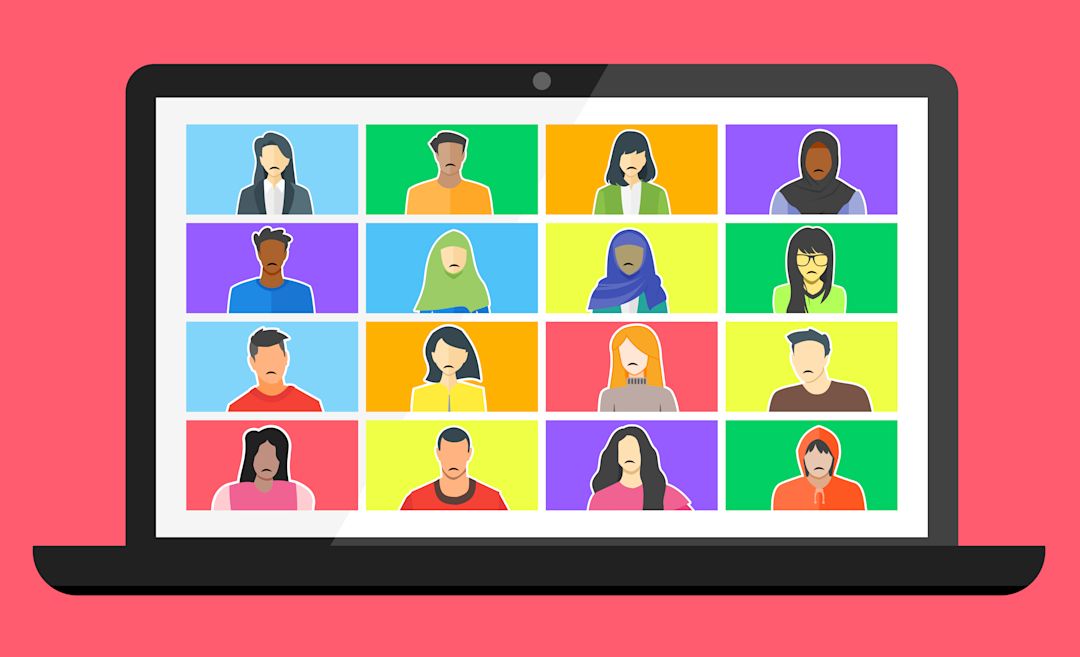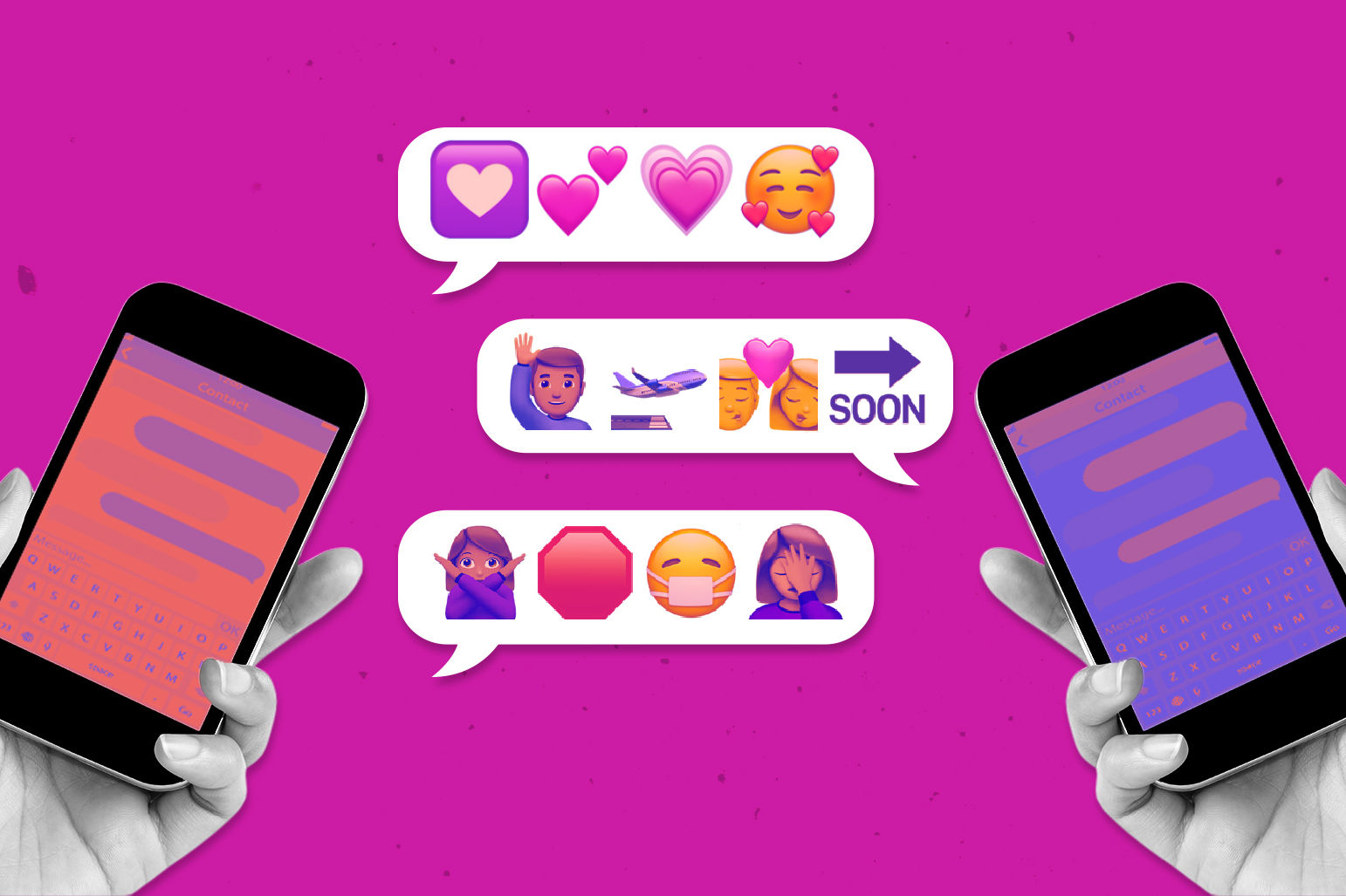The Collective Trauma of COVID-19

The invisible threat of COVID-19 has taken a collective toll on social behavior and mental well-being. As more and more time passes under quarantine, more and more people are connecting through virtual methods. But how effective will virtual hangouts be in the long run? "Reaching out to connect with others through whatever technology we have available is a good sign. And for some, these can be effective substitutes for maintaining important reciprocal social connections," says Bill Griesar, a senior instructor in the Department of Psychology at Portland State University. "Yet for others, losing direct, in-person access to friends, colleagues, and community is difficult—particularly over time, as the novelty of Zoom, for example, wears off."
Image: Menara Grafis/Shutterstock
There’s a quiet sadness that permeates the fabric of things these days. The silence of playgrounds, the houseless folks coughing from underneath their plastic tarps, the avoidant eyes behind a cloth mask looking down at dirty shoes that scurry six feet away. COVID-19, the “invisible enemy,” is also an uncertain one. A collective uncertainty that’s affected every single person.
“We’re living through a collective trauma event. And I don’t think I’m being hyperbolic or dramatic to say that,” Aurora Sherman says. “The fallout—emotionally, financially, educationally, occupationally—is going to take a long time to get through and resolve.… It’s not just stress, it’s not just anxiety, although those things are important and very real. But this rises to the level of a truly traumatic event, and every person’s physical body and emotional psyche responds to trauma slightly differently.”
For Sherman, an associate professor in the school of psychology at Oregon State University, she’s seeing her job, social life, and household reshape themselves accordingly. And while most conversations at the academic level involve what she says is the “first priority”—finding a cure and providing medical support for those who need it most—Sherman is naturally curious about how this pandemic will alter social behaviors, why people do or don’t cooperate with their respective states’ stay-at-home orders, and what kind of development effect this will have on children and young adults. As far as exactly how we’ll be affected, there is “no single one-size-fits-all answer,” she says.
Part of that’s because we’re seeing a wide variety of responses to social distancing, “because we don’t have a single unified national leadership on this issue,” Sherman says. “We have 50 governors making 50 different decisions. It’s difficult to draw specific conclusions.” And the other part of that is that we simply don’t have enough data. Sherman emphasizes how important it is to note the highly emergent nature of COVID-19 and its lack of quantifying data. But one thing she does point to is how this disease and our corresponding physical distancing efforts are impacting every one of us, socially and psychologically.
Perhaps the swiftest most observable change is the shift to virtual communication: teleworking, Zoom video conferencing, and distance learning, to name a few. So there’s been both this reduction in physical contact an increase in verbal interactions and contacts with people. Sherman wonders: What are we losing with this different kind of communication?
“We lose channels of communication,” she says. “When we can see each other face to face, we have body language, we have facial expressions, for people who know each other well, we have shorthand physical gestures. When we’re on the phone, we don’t have that. When we’re in a Zoom meeting we have that, but maybe significantly reduced.”
Bill Griesar, a senior instructor in the department of psychology at Portland State University and a neuroscience coordinator with NW Noggin, says connection through any technology is a good sign, but it does have some shortcomings. (Click here to read an extended Q&A with Griesar.)
“For some, [virtual methods of communication] can be effective substitutes for maintaining important reciprocal social connections. Helping someone, and receiving support, can take place over a Zoom call or through a multiplayer online video game. Many young people do this all the time, and are more used to virtually connecting through smartphones and text,” Griesar says. “Yet for others, losing direct, in-person access to friends, colleagues, and community is difficult—particularly over time, as the novelty of Zoom, for example, wears off.… There isn’t much research, but I suspect that for some it’s a poor substitute for face-to-face interactions, especially for those who primarily engaged offline. It’s not going to work for kindergarten classrooms, or in other settings where direct observation and response to the behavior of others are key to learning. And if you’re lonely, and don’t have a strong connection to those you’re meeting on Zoom, these experiences may provoke even more anxiety, loneliness, social exclusion, and stress.”
Regardless of the cause, Griesar says, loneliness is linked to poorer sleep, reduced immune function, more stress, depression, suicidal ideation, dementia, and an increased risk of early death. With a rising death toll (a number that now exceeds 50,000 in the US alone), financial insecurity, and the constant onslaught of news (sometimes misinformation) about the public health crisis, some mental health services and crisis lines have seen an uptick in activity.
According to the Center for Public Integrity and Columbia Journalism Investigations, the federal Disaster Distress Helpline answered roughly 7,000 calls and received 19,000 text messages in March, a more than eightfold increase from February. Likewise, the National Alliance on Mental Illness’s HelpLine is experiencing an increase in calls.
Here in Oregon, we aren’t quite seeing numbers that mirror national trends. In fact, Leticia M. Sainz, interim deputy director at the Multnomah County Behavioral Health Division, says the crisis call center, which averages about 200 calls per day, has seen a slight dip in caller activity, but that many of those calls are indeed related to coronavirus. What’s more common, she says, is that the crisis center is receiving calls from people who already have mental health challenges that are compounded with the looming anxiety of COVID-19.
As far as why the crisis call center has seen such as dip, Sainz says it may have to do people not knowing the mental health line is fully operational. But another part is something Sainz admits she struggles with herself: allowing yourself to feel scared or anxious or sad, and understanding it’s normal to feel that way.
“I think that it’s safe to say that if you’re a human in this world, and you’re aware of what’s happening, it’s taking a toll on your mental wellness. That’s just kind of true for all of us because we’ve never experienced anything like this before. We don’t know exactly when it’s going to end, how it’s going to impact us. There’s a million pieces to that,” Sainz says. “I think a big piece of this is folks understanding that that anxiety and their experience of it is normal. The first step is to acknowledge that this is a very normal human reaction, and no matter how good or how blessed or how many things could be going worse, if this is how you feel, that’s how you feel.”
“There are some things to expect like sadness, difficulty concentrating, mild to severe depressive episodes, so we just need to be as patient and as gentle with ourselves and self-forgiving as much as we can, because there’s nothing we can do right now,” Sherman says. “We literally have no control over it. Human beings hate being put into situations where they have no control, so some of us, I think, are reacting by continuously trying to assert control, but honestly that’s exhausting.”
But what we do perhaps have control over is how we take care of ourselves and each other. Being open about our feelings and fears is a start, Sherman says. Other ways to help are by utilizing our technological resources to show social support (the perception that we are loved and cared for) to our friends, family, and loved ones, and finding ways to help manage our individual stress and anxieties as we collectively cope.
For Sainz, a Jazzercise instructor, she finds freedom in dance, livestreaming a DJ performance on Facebook and freestyling in her home. Sherman finds solace in watching hummingbirds visit the blooming lilacs in her yard.
“It doesn’t undo the fact that I’m scared, the fact that my job has been turned upside down in ways that I hate. It doesn’t undo the fact that I have a sister-in-law who is going to go to the ER in Houston, Texas, today,” Sherman says. “It doesn’t undo any of that, but it does allow me this moment of solace to say, ‘Life does go on, flowers do bloom, the sun does come up.’”
Resources for those who need immediate help
Multnomah County Crisis Line: 503-988-4888
Lines for Life: 800-273-8255
Cascadia Behavioral Health: 503-674-7777




